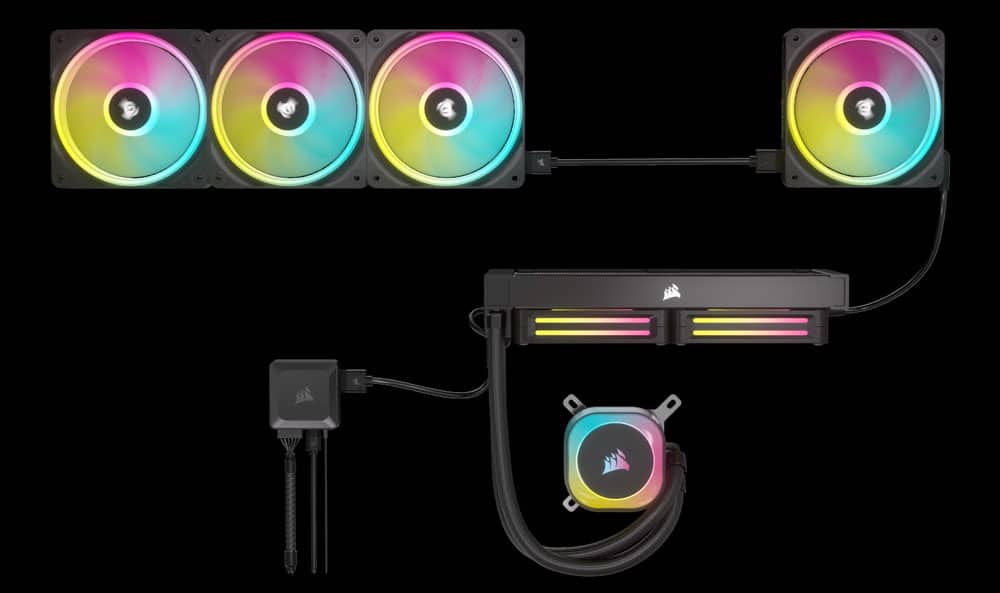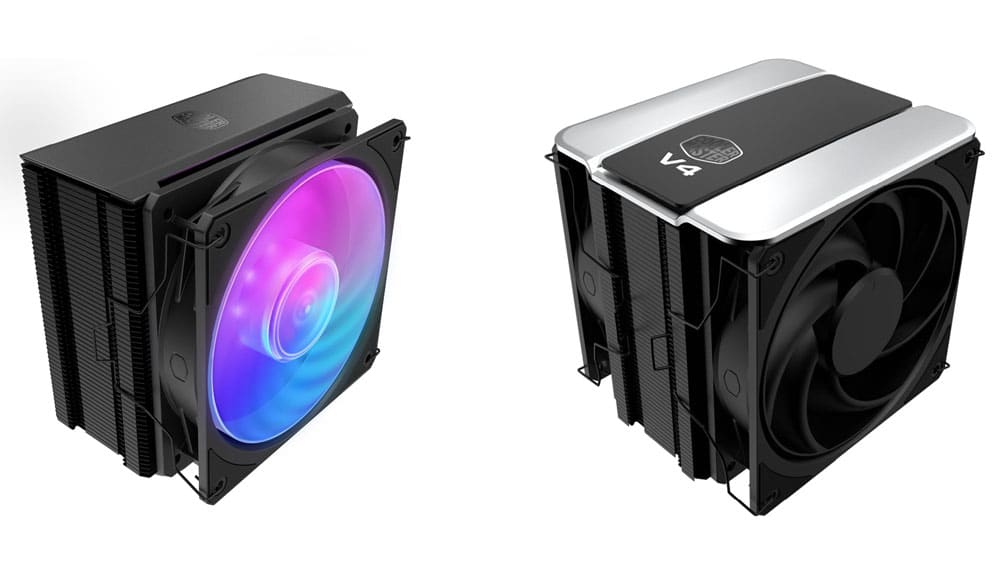Corsair introduced during Computex 2023 the iCUE Link Smart component ecosystem, which allows you to daisy-chain Corsair’s cooling components, puting an end to power and ARGB cables. The signal passes through every cooling component, in a way that reminds me the GPIB protocol.
Most users with large AIOs and several fans installed into their chassis know how painful it is to connect them through individual power and cables. Things get even worse if ARGB cables are also included in the mix. Using hubs makes things a bit easier since at least you don’t have to connect every fan on a mainboard header, which is limited, but still, the amount of cables you have to deal with doesn’t change. Daisy chain fans made our lives easier, but what about other cooling components, like the fans and the pumps on our AIOs? Something had to be done about this, and Corsair, for another one-time, is the first to introduce a new way of interconnecting cooling components. It is called iCUE Link and reminds me much of the GPIB protocol. The latter, also named IEEE-488, was introduced in 1978 and allows the connections of 15 devices to one bus, with a total bus length of up to 20 meters and a distance between devices of up to 2 meters. Corsair’s iCUE Link allows up to seven devices per bus, with shorter lengths than GPIB, since chassis are much smaller than the lab environment where the GPIB protocol is used.
There is only a single connector in the iCUE Link, making things simpler. Through this connector, power and data can pass. Corsair states that the iCUE Link utilizes a fully digital bus network architecture, where data passes from one device to another till it reaches its destination, the system. Each compatible product has its own MCU, and each fan has a temperature sensor, which I find fantastic!
There are several iCUE Link products available right now at rather stiff prices.
| Product | Price | Notes |
|---|---|---|
| H170i RGB AIO Liquid CPU Cooler | $270 | 420mm Radiator |
| H150i RGB AIO Liquid CPU Cooler | $240 | 360mm Radiator |
| H115i RGB AIO Liquid CPU Cooler | $220 | 280mm Radiator |
| H100i RGB AIO Liquid CPU Cooler | $200 | 240mm Radiator |
| QX120 RGB 120mm PWM PC Fans Starter Kit with iCUE LINK System Hub – White | $140 | |
| QX120 RGB 120mm PWM PC Fan Expansion Kit | $50 | |
| System Hub | $60 | |
| Cable, 1x 600mm Y-Cable with Straight connectors, White | $20 | |
| Cable, 2x 200mm with Straight/Slim 90° connectors, White | $20 | |
| Cable, 2x 100mm with Straight connectors, White | $20 | |
| Cable, 2x 200mm with Straight connectors, White | $20 | |
| Cable, 1x 600mm with Straight connectors, White | $20 | |
| H150i AIO Cooler – Black and QX120 Triple Fan Kit Bundle | $399 | |
| H150i AIO Cooler – White and QX120 Triple Fan Kit Bundle | $410 | |
| H100i AIO Cooler – Black and QX120 Triple Fan Kit Bundle | $360 | |
| H100i AIO Cooler White and QX120 Triple Fan Kit Bundle | $370 | |
| 4-Way Signal Splitter | $20 | |
| XC7 RGB ELITE CPU Water Block – Stealth Gray | $120 | |
| Cable 100mm White/Black | $10 | |
| Connector Kit | $15 |
As you can see in the table above, the cost of innovation is high. Even the cables are expensive, with most of them costing 20 dollars. Hopefully, in time, prices will drop.
The hub, costing 60 dollars, is essential, allowing you to build the configuration that suits your needs. Each hub can support up to 14 devices, so you likely won’t need a second one. A good cooling kit with an H150i AIO and three QX120 fans costs $410. I should note that all ICUE Link AIOs include a system hub, so you save 60 dollars there. You should also ensure to get only the necessary cables for your system after checking the ones provided with the iCUE Link parts you will purchase to avoid extra expenses.
Essential iCUE Link Info:
- iCUE Link devices can be networked in series or branched through a Y-splitter cable or splitter hub. Each iCUE Link device can be controlled independently.
- iCUE Link cables are reversible, removing doubt about whether you’ve inserted the iCUE LINK cable into a compatible iCUE Link device.
- iCUE Link is a device-agnostic architecture. You can connect iCUE Link devices in any order.
- iCUE Link does not currently support hot-plugging. Therefore, any changes to the hardware connection must be done with the PC off. Hot-plugging support is planned to be added with future firmware updates.
- Each port on the iCUE Link System hub can support up to seven (7) devices. Exceeding this will put the System Hub in a low-power state until the device quantity connected on one port is reduced to seven or fewer.
- iCUE Link is not backward compatible with legacy iCUE hardware. You will need to control legacy devices with legacy controllers. However, iCUE 5 software unifies both ecosystems into one interface for easy control.


